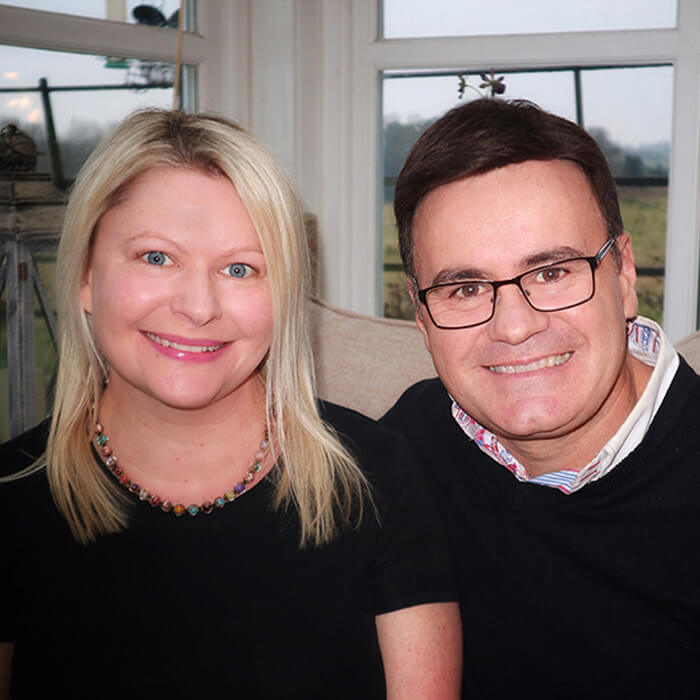
by Sarah Blinco | Aug 3, 2018 | Career and mindset, Lifestyle, Travel Live Learn in the media
In today’s competitive world, business networking is vital for success and is a critical component for achieving success in any industry. Whether you are an entrepreneur, a small business owner, or a corporate professional, building and maintaining a strong network of contacts can open up new opportunities, provide valuable insights, and help you stay ahead of the curve. With the right connections, you can access resources, gain referrals, and establish mutually beneficial relationships that can propel your career or business to new heights. Simply put, business networking is no longer just a nice-to-have, but a must-have for anyone who wants to thrive in their field.
I’ve shed insight on how to introduce yourself professionally and make the most out of your time at conferences and business events to get your career where you’d like it to be.
The importance of professional development – how to introduce yourself professionally: the conference
The packed conference room was buzzing with excited energy. The popularity of the break-out session I’d just witnessed had obviously been underestimated. People were sitting and standing in every free space.
I, like all the attendees, had been impressed by the generosity of the speakers who hadn’t held back on sharing wisdom about their business success strategies.
Dazzled, I simply had to meet them!
I lined up with other inspired folk at the end of the session to say hello. When it was my turn to swiftly meet-and-greet, I spoke but a few words, handed over a business card and scurried off.
Significant networking fail. NOT a lesson in how to introduce yourself professionally or beneficially at an event.
Networking doesn’t have to be scary. Be prepared
We’re coming into our final quarter of the year. With so much on the horizon including conferences, events and a host of opportunities proving the importance of professional development, there’s a good chance you might find yourself in a situation like this. I’m here to urge you to make it work for you (better than I made it work for me).
There’s no doubt that networking fast-tracks the opening of career and business doors. This happens through:
– the gaining of new tips to improve your work
– learning that accelerates growth
– finding customers or a new job
– making friends or discovering people who become future business partners, mentors and collaborators.
Yet, many of us cringe at the very thought of networking.
When we finally get ourselves in front of the crowd, we’re often ill-prepared, shy and take the wrong approach.
I soak up conferences (I especially love TBEX for travel content creators)! I love the learning and the inspiring presenters. I have always known the networking component is seriously valuable, but for many years I’ve made the errors referenced above.
When running my own business, I had to get stuck into the networking game, faking it ‘til I made it, so to speak.
For every person I met, I had a chance to discover how I might add value to what they were working on, and critically, much of that led to paid business.
How to make the most of a conference or event and introduce yourself professionally
It’s easy to slip into shy/tired/straight-up complacency though. This is where you hang out with the same people, get caught scrolling emails on your phone, feel stuck for conversation, or march right on in there with your business card.
Shamefully, I’ve done it all.
But, here’s my intention for us from now on:
be open to opportunity.
Make it your mission to connect with new people at each event you go to. Get to know them on a personal level.
Rather than only talking business, see if you can discover what hobbies, work, people, heroes, background or interests you have in common.
Critically, listen.
Ask questions, be interested, helpful, and listen some more.
If you have a few conversation-starters up your sleeve, that inevitably improves confidence when you approach someone new in a room.
Try things like ‘what brings you here today’, or ‘what are you working on that you’re most excited about right now’?
Another element I’ve always struggled with is getting my story right. You know, the ‘30 second elevator pitch’ thing!
I have always found it hard to articulate. Probably because I never crafted nor practised it – which is the final important bit of advice I wish to impart.
Instead of stating your job title when you meet new people, try sharing who you serve, what problem you solve, how you solve it and what results you’ve achieved.
For example: ‘I serve business owners by helping them produce high quality, creative digital content and this year already I’ve helped more than 45 brands reach their audience and engagement goals within six months of working with me’.
Over to you…
What emphasis do you put on the importance of professional development?
Make the best of what’s ahead this year, raise your profile and develop connections (offline, initiated via email, and online) that take you closer to your goals.
There’s no time like the present!
Keep in mind too, it’s only human to feel shy, reserved, or unsure of what to say.
Be honest about it – you can be certain others know the feeling well!
How do you see it? Share in the comments below.

by Sarah Blinco | Sep 22, 2014 | Career and mindset, Travel Live Learn in the media
I – like many of you, I’m sure – am often approached on platforms like LinkedIn, MeetUp or even via email, and asked questions about media, magazines, social media… I’m usually very happy to help – what goes around comes around.
Sometimes however, when I receive a poorly worded, unresearched note that does not contain polite basics like a please or thank you, or even my name spelled correctly, I do feel like ignoring it. Indeed just this weekend I followed up a person who cold-contacted me online to ask about magazine publishing in a rather brash fashion. I did give the benefit of the doubt, and replied straight away as I happened to have a moment to spare on receipt of his initial note; but would you believe, no thank you in reply. Nothing. When I messaged a few days later to ask if he’d received it ok, prompting a, “yes thank you” (or an opportunity for me to let him know that he really needs to work on being more professional in his approach), I received a barrage of other questions back – many of which he could discover answers for by researching just a little bit in the first place.
Instead of focussing on the negative though, I’d like to highlight the messages my colleagues and I do enjoy replying to. They are messages where spelling is checked, some amount of research is obvious, there’s evidence they know who we are and what we do, and they are composed in a succinct, polite and grateful manner.
You’ll find most professionals are happy to help with ideas, mentoring and advice, whether they be editors, bloggers, publishers, producers, performers, entrepreneurs or any other type of business or service provider. There is an etiquette to cold-contacting someone you don’t know on LinkedIn, Twitter, MeetUp, via email etc. Here are my tips on rules for approaching a professional online about business and life advice:

5 Rules for approaching a professional online about business and life advice or opportunities
1. Be diplomatic, not demanding. Perhaps it doesn’t sound like it in your head, but re-read your correspondence (or better still, have someone check it for you) before you press “send”, to ensure your language is coming across as pleasant, not pushy. Keep it short and to the point. Ask reasonable, sensible questions – it’s not up to the person on the other end to give you the Cliffs Notes on whatever you’re aiming to embark on. That is, I’ve basically been asked in the past, “Start from the beginning – I want to create a lifestyle and fashion magazine, how do I write and publish it?” This is information we take years to learn and build on; as much as I’d like to help, you’ll need to do a little bit more research and training than that.
2. Do your research. If you’re approaching a professional for advice, they’ll spot a mile off whether you’re serious, interested and passionate about your purpose, simply by the language you use and the information shared. Yes, of course it’s tempting to seek short-cuts to making a million (or more) off that awesome idea you’ve just had, but, if you’re ignorant about the topic you’re approaching a pro for advice on, it will shine through. Researching the topic will mean you do not come across as a time-waster, and it would be a shame to lose not only a potential mentor, but respect in the industry, simply because the short-cut option (no research and straight to cold-contacting on LinkedIn) is the one you went for. If you do not want or mean to come across as unprofessional, reconsider your cold-contact approach, and know your subject/passion (as you should, if you’re aiming to build a career out of it).
3. Be respectful. People are busier than ever these days. You can show respect by being strategic with the carefully considered questions you ask, by keeping your correspondence polite and succinct, and by demonstrating you have a genuine interest in what you’re talking or asking about. Assuming you’re liaising with a professional in that field, you can be fairly sure they will be enthusiastic about the topic too – if you demonstrate you are, chances are they’ll consider that you’re “one of them”, and be happy to help if they can spare the time. On the respect note too, it’s always a good idea to provide some kind of link, profile image or bio about who you are – that is, I thought it was quite rude to be approached by someone on one of our most common social platforms with a barrage of questions, but no profile picture, no bio or background on who they are. If you’re attempting to network and gain expert advice from a professional you’ve identified online, it’s no good to be operating anonymously (read: highly unprofessional).
4. Be in allowance of the response you may or may not receive. With so many demands on our lives today – both in the office and at home – I can tell you from personal experience and from knowing how my friends operate, lots of people have good intentions to reply with advice or an offer of help, but sometimes it just doesn’t or can’t happen for whatever reason. A non-reply or slow one isn’t always about you (particularly if you’ve been polite, succinct and professional in your approach). That said, you’ve got nothing to lose by reaching out to people for advice, just please consider the other points – basic business and communication etiquette – I’ve made here when you do so.
5. Be grateful. Time is precious and if you are asking for someone else’s advice or insight (especially in the instance where you don’t know them), that’s a big ask – it’s time you’re actually asking for. Don’t take it for granted just because you can quite simply open up a dialogue box on the computer, type in a message and hit “send”. The digital world has opened up so many wonderful portals for seeking advice, growing networks and learning about anything we desire. If you use it wisely, you have the potential to go far.
In the end, consider the same rules as you would for networking in person. That is, you would usually politely introduce yourself, succinctly sell what you’re all about (remember the “30 second elevator pitch”), show your enthusiasm and interest in the person/what they do, and diplomatically ask carefully-considered questions; then you would say thank you.
What’s your experience been with asking or receiving questions via digital platforms? I’d love to know what you think about rules for approaching a professional online about business or life advice – drop me a line in the comments below.
-Sarah.
PS Here’s some more helpful advice on how to approach industry pros and peers via email – The 5 Rules of Email First Impressions
by Sarah Blinco | Feb 2, 2014 | Being a digital nomad and working abroad, Travel blogger destinations

I’ve been finding it difficult to get started lately. It’s unusual for me, but this does happen on occasion. Like many of you, I work for myself, I’m really busy and my to-do list is always extensive.
Each day it includes a merry mix of all the elements I’m meant to include in life – fitness, nutrition, meditation, keeping an eye on my goals, managing clients, calling my mum, caring for the dog, paying my bills and writing. Lots of writing for work! Usually it’s because I have so much to do that I speed through things in an attempt to get everything done, but this past week or so I just can’t seem to find the motivation to conquer it. I skip out on going to Pilates, emails are driving me insane so I often procrastinate on them, and same with many of my social media tasks. I end up stuck on mundane tasks that I don’t have to think much about, but I’m left in the evening with either a lack of excitement about the day that’s just been, or I’ve not ticked off much of my to-do list.
I don’t like either situation, and neither is ‘me’. I am usually very good at time management – if I could just keep from feeling fuzzy headed and lacking enthusiasm! I’m also at a point in my business where I’m working a LOT but I’m working at bringing in new clients and money, working on the business, pitching etc. Consequently I’m working all the time but for little financial return. I don’t mind this, but I think it’s potentially getting me down a bit. Can you relate?
I’ve identified:
1. I reckon I’m lacking in support and contact with others, and therefore am left floundering on my own for most of the day.
2. My list of things to do is too big, and I’m getting overwhelmed, and therefore instead of starting, I’m struggling with where to start.
3. I’m also quite tired so potentially something health-wise I need to rectify.
I bet I’m not alone on this front though. Does anyone understand how I feel? Do you have any advice?
I’ve taken a step toward my goal of building my online business and also digital networking by signing up to a 30 day blogging challenge with the Simple Blogging Network. I hope that by doing this I’ll be pushed along to blog more/regularly but with the bonus of receiving engagement and feedback, and also the opportunity to interact with others.
I’ve also done a bit of Sunday afternoon reading about getting motivated when you’re struggling, and have discovered a couple of interesting articles. One is a couple of years old, but really helpful, 16 Ways to Get Motivated When You’re In a Slump, by Loe Babauta. From this piece I gleaned that I am probably focussing on too many things, although, it’s hard to narrow that down when the items on my list to follow up on each day are about building the business and hopefully bringing in dollars.
And in amongst that, I need to fit in health and fitness time which is an important goal to me at the moment too (but often put on the back burner if I’m ‘behind’ with work). Nevertheless, perhaps narrowing my goals is something I need to address sooner rather than later, so I’m working towards a more defined ‘something’ rather than a whole heap of things.
From these one or two narrowed goals, I liked his suggestion of looking for something each day to inspire towards those goals, for example, if fitness is important, or even a goal of ‘getting motivated’ is critical, then reading something about these things in the morning to get fired up about it is a good idea.
Another feature I enjoyed was this one from The Huffington Post by James Clear, with particular reference to exercise, but I think the tips apply to many situations. He discusses the “pre game routine” that’s “so easy you can’t say no”. It’s kind of like taking baby steps towards getting going, and creating a routine so that the day – or what I’m meant to be getting into each morning – is shuffled into motion without a hitch. So, perhaps my pre-blogging routine is to settle in with a cuppa and just write for 15 minutes…
Anyway, food for thought, and I at least feel a little better about being proactive about solving this issue. Who knows, maybe with Monday morning tomorrow I’ll be back on board. Feedback and comments always welcome though.
Sarah Blinco




